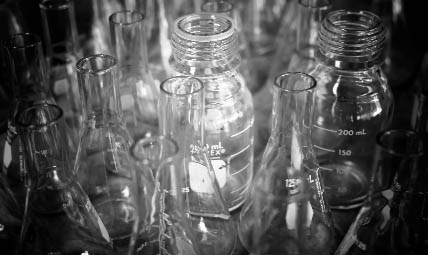Cambridge is a world-leader in stem cell research. There are now 25 stem cell laboratories across the University, which have attracted some £72 million in funding in 2014 alone. Commercial opportunities in this important area of research investment are now being developed with the assistance of Cambridge Enterprise.
The potential therapeutic applications of stem cells – such as regenerating damaged tissues or organs – have generated a great deal of interest over the past decade. While these types of applications are exciting, it is a long journey from lab to clinic. The most immediate impact of stem cells on human health will most likely come from their use in the development of new drugs.
The ability to generate stem cells by reprogramming cells from patients’ skin has revolutionised human stem cell research. These cells, known as human induced pluripotent stem cells (hIPSC), can be differentiated into almost any cell type, allowing for a ready source of human cells for testing new therapies.
Identifying toxic drugs as early as possible is vital to the safety and efficiency of the drug discovery process.
Dr Vallier
DefiniGEN, founded in 2012 as a spin-out company from the University, was one of the first commercial opportunities built on the University’s expertise in the area of stem cells. With the help of Cambridge Enterprise Seed Funds, the company was created based on the research of Dr Ludovic Vallier, Dr Tamir Rashid and Professor Roger Pedersen of the Anne McLaren Laboratory of Regenerative Medicine to supply hIPSC-derived cells to the drug discovery and regenerative medicine sectors.
Dr Vallier’s team developed the technology to generate human liver cells (hepatocytes) in a highly reproducible and scalable manner for commercial use. The technology has also been used to model a diverse range of inherited liver diseases and has the potential to accelerate the development of new therapies for these conditions.
The liver is the key organ for metabolising drugs and removing toxins from the body. Consequently, it is often affected by toxic compounds. Demonstrating that a new drug candidate is free from liver toxicity is a key test in the development process, and it is a test that most drug candidates fail.
“If a drug’s failure occurs in the clinical phase of development, a great deal of time and money will have been lost,” said Dr Vallier. “Therefore, identifying toxic drugs as early as possible is vital to the safety and efficiency of the drug discovery process.”
In addition, the company’s OptiDIFF platform has produced libraries of disease-modelled cells for a range of diseases, including the most common inherited metabolic conditions such as Familial hypercholesterolemia and Alpha-1 antitrypsin disorder. The cells effectively demonstrate key pathologies of diseases and can be used to improve lead optimisation studies, assisting the development of new therapies for these conditions.
DefiniGEN is currently working on generating iHPSC derived pancreatic cells to be used in diabetes research and drug discovery, and the development of lung cells for research in to conditions such as emphysema and chronic obstructive pulmonary disease (COPD).
Photo credit: Laboratory Science – biomedical by Bill Dickinson via Flickr
Tags: cells, DefiniGEN, drugs, liver, Ludovic, OptiDIFF, Roger Pedersen, stem cell, Tamir Rashid, technology, toxins




